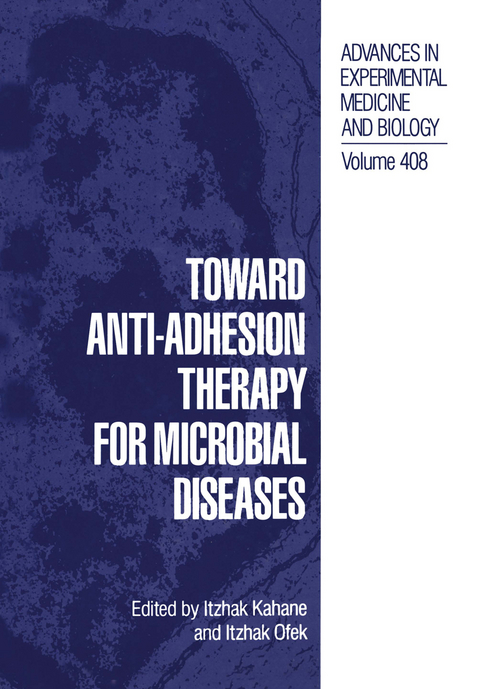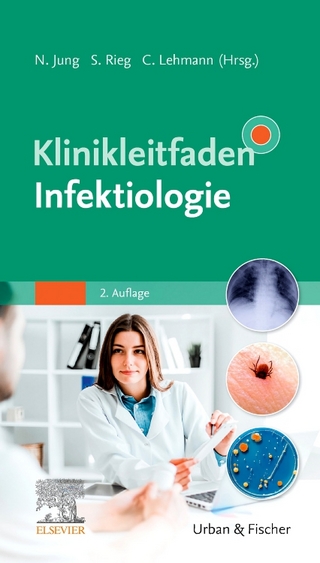
Toward Anti-Adhesion Therapy for Microbial Diseases
Springer-Verlag New York Inc.
978-1-4613-8042-9 (ISBN)
1. Carbohydrate—Lectin Interactions in Infectious Disease.- 2. Anti-Adhesion and Diagnostic Strategies for Oro-Intestinal Bacterial Pathogens.- 3. The Gal?1—4GAL-Binding Adhesin of Streptococcus suis, a Gram-Positive Meningitis-Associated Bacterium.- 4. Development of Anti-Adhesion Carbohydrate Drugs for Clinical Use.- 5. Towards Anti-Pseudomonas aeruginosa Adhesion Therapy.- 6. Inhibition of Bacterial Adhesion and Infections by Lectin Blocking.- 7. Adhesion and Invasion of Escherichia coli: Studies on Function and Regulation.- 8. Nonfimbrial Adhesins of Escherichia coli.- 9. Fimbriae—Mediated Adherence Induces Mucosal Inflammation and Bacterial Clearance: Consequences for Anti-Adhesion Therapy.- 10. Group A Streptococcal Adhesion: All of the Theories Are Correct.- 11. Adhesins of Staphylococcus aureus that Bind Lewisa Antigen: Relationship to Sudden Infant Death Syndrome.- 12. Alternative Inhibitors of Mycoplasma Adherence.- 13. Studies on the Molecular Mechanisms of Meningococcal Interactions with Human Cells: Towards Anti-Adhesion Measures for the Control of Meningococcal Disease.- 14. Lipopolysaccharide’s Role in the Association of Salmonella Cells to the Mouse Intestine Studied by Ribosomal in Situ Hybridization.- 15. Interactions of Bacterial Adhesins with the Extracellular Matrix.- 16. Proteins F1 and F2 of Streptococcus pyogenes: Properties of Fibronectin Binding.- 17. Adhesion Molecules in Leukocyte Endothelial Interaction.- 18. Multiple Stages of Virus-Receptor Interactions as Shown by Simian Virus 40.- 19. The Effect of Respiratory Virus Infection on Expression of Cell Surface Antigens Associated with Binding of Potentially Pathogenic Bacteria.- 20. Anti-Escherichia coli Adhesin Activity of Cranberry and Blueberry Juices.- 21. The Effect of CranberryJuice on the Presence of Bacteria and White Blood Cells in the Urine of Elderly Women: What Is the Role of Bacterial Adhesion?.- 22. Role of Human Milk Constituents in Blocking the Adherence of Enteric Pathogens.- 23. The FimH Protein of Type 1 Fimbriae: An Adaptable Adhesin.- 24. Inhibitors of Candida albicans Adhesion to Prevent Candidiasis.- 25. Trichomonas vaginalis Adhesin Proteins Display Molecular Mimicry to Metabolic Enzymes.- 26. Cell Surface Molecules of Pathogenic and Nonpathogenic Entamoeba histolytica and Their Relation to Virulence.- 27. The Role of Lectins in Recognition and Adhesion of the Mycoparasitic Fungus Trichoderma spp. to Its Host.- 28. Microbial Coaggregation in the Oral Cavity.- 29. Hydrophobic Interactions as a Basis for Interfering with Microbial Adhesion.- 30. Anti-Adhesins of Streptococcus sobrinus.- 31. Abstracts.- 32. Concluding Remarks.
| Reihe/Serie | Advances in Experimental Medicine and Biology ; 408 |
|---|---|
| Zusatzinfo | 297 p. |
| Verlagsort | New York, NY |
| Sprache | englisch |
| Maße | 170 x 244 mm |
| Themenwelt | Medizin / Pharmazie ► Medizinische Fachgebiete ► Mikrobiologie / Infektologie / Reisemedizin |
| Studium ► Querschnittsbereiche ► Infektiologie / Immunologie | |
| Naturwissenschaften ► Biologie ► Biochemie | |
| Naturwissenschaften ► Biologie ► Botanik | |
| Naturwissenschaften ► Biologie ► Zoologie | |
| ISBN-10 | 1-4613-8042-1 / 1461380421 |
| ISBN-13 | 978-1-4613-8042-9 / 9781461380429 |
| Zustand | Neuware |
| Informationen gemäß Produktsicherheitsverordnung (GPSR) | |
| Haben Sie eine Frage zum Produkt? |
aus dem Bereich


